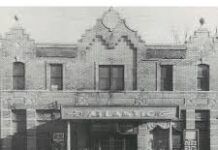Regionalization
There were a lot of steps and a lot of time involved in the late 1950s and early 1960s when Highlands and Atlantic Highlands first started plans of regionalization for the 7th through 12th school grades and Henry Hudson Regional was born.
Nor did it always run smoothly, but through it, not only was the newly formed board of education involved, but so were the members of the two local boards and the governing bodies in both towns.
At the time, Highlands students went to Atlantic Highlands High School on First Avenue. Regionalization was proposed to avoid overcrowding at the high school, as well as because of the fear of future overcrowding at the Highlands Elementary School.
Once voters approved a district, and a temporary board was named, the first action was to approve $10,000 to establish a temporary budget for the new board.
The first regional school board was selected, not voted on, by Earl Garrison, Superintendent of Schools for Monmouth County. The board was selected after both boroughs narrowly approved regionalization at all, with Highlands approving it by 20 votes and Atlantic Highlands by 87 votes. In both cases, it was the downtown residential districts who cast the most votes against a merger of the two towns in education.
The first Board of Education for Henry Hudson included C. Allan Reed, Atlantic Highlands, who was elected president, George Lahey of Highlands, vice-president. Highlands residents Doris Finlay, Alexander Bahrs, and William Feste, and Atlantic Highlands members Sam Brown, D. Adolph Bush, Dr. Thomas Ahern and Anna Van Note.
The new board wanted a name for the new district and left it to students. Of 135 names submitted, seven students suggested Henry Hudson. So, their names were drawn from a hat to see who would win the prize for naming the school. The honor went to Thomas Hart, a fifth-grade student in Atlantic Highlands.
Next on the agenda was where to build the new school. Highlands local school board member Florence Adair was against construction of a new school; she wanted an addition on the Atlantic Highlands High School. Atlantic Highlands board member George Oberlander didn’t want to build the school either. He wanted the money to be spent either for a separate elementary school or enlarging the current high school.
The regional board, after its first election and some changed members, then named a professional group to seek out sizes and asked local realtors for information on tracts with 10 to 15 acres of land. Several local realtors, Harvey Bowtell, E.A.Gelhaus and Earl Snyder, suggested tracts of up to 33 acres, all along Route 36. Two of them were in Middletown, the third split between the two boroughs.
Then another piece of land came up, which became known as the Claridge tract since no one knew the names of all the members of the group who had recently purchased the property. The board finally went to Secretary of Stated Edward Patten who gave them the names of all the firm that bought the land, including an Atlantic Highlands resident and at least one from Middletown. They were offering the property they had purchased a few months before for $10,000 at $20,000 to the district. Patten told the board when he gave them the names of all the owns, that they were not a secret, it’s just that no one had ever asked for them before.
It was after this that Benjamin Trask offered 32 acres adjacent to his home at the top of S. Peak St. in Highlands. He had 28 acres he would sell to the district for $31,000. Kathleen Mendes, who had replaced Ms. Finlay on board, who lived almost adjacent to the property and new Trask was named to investigate the matter further. Although a couple of Atlantic Highlands residents then offered other sites in Atlantic Highlands rather than the Trask property, the board retained its option on the Highlands site and voters approved it in the following November’s election.
It was also determined that the cost of the school and its operation would be based on municipal value for construction, and on the proportionate number of students for its operation.



